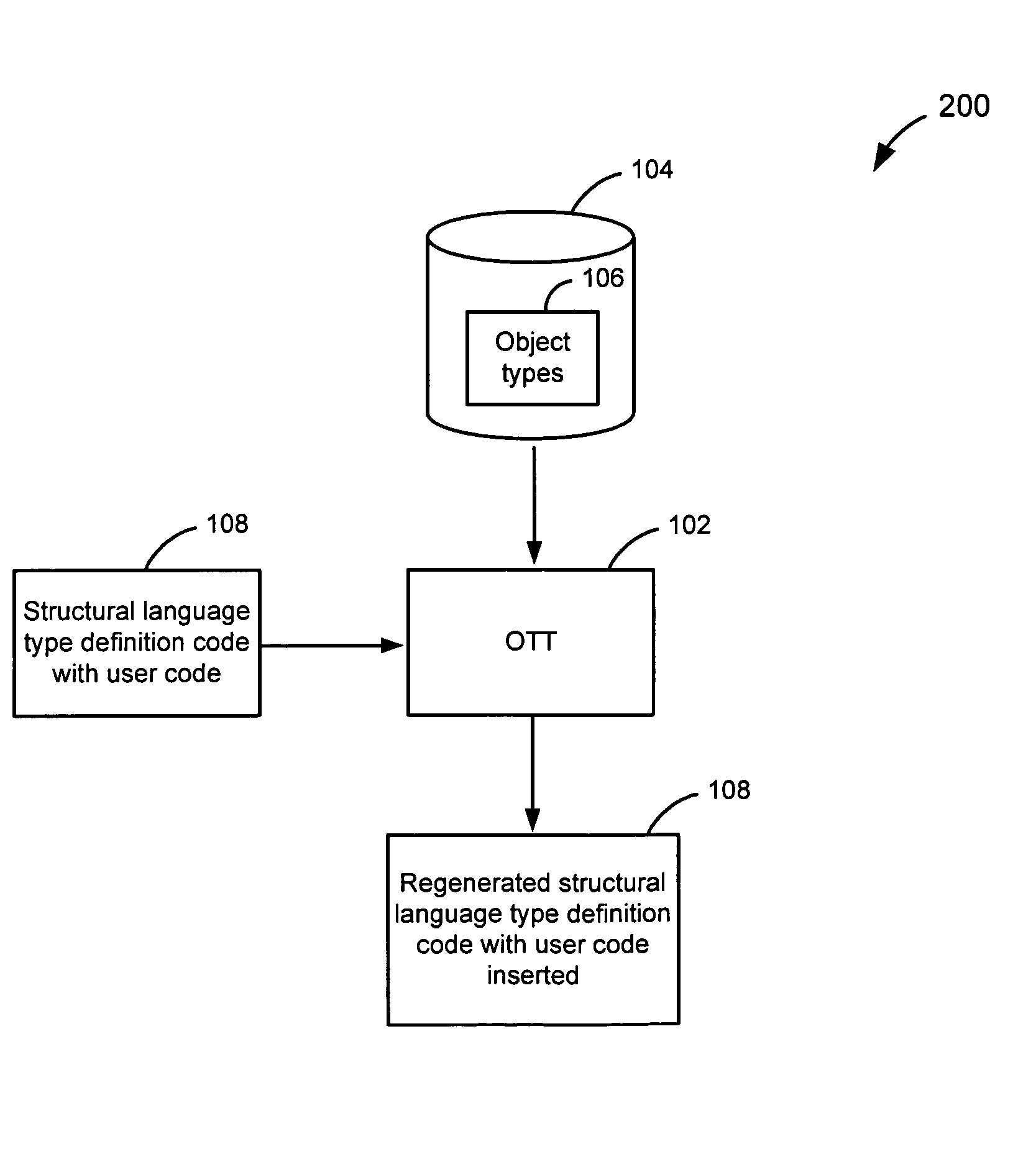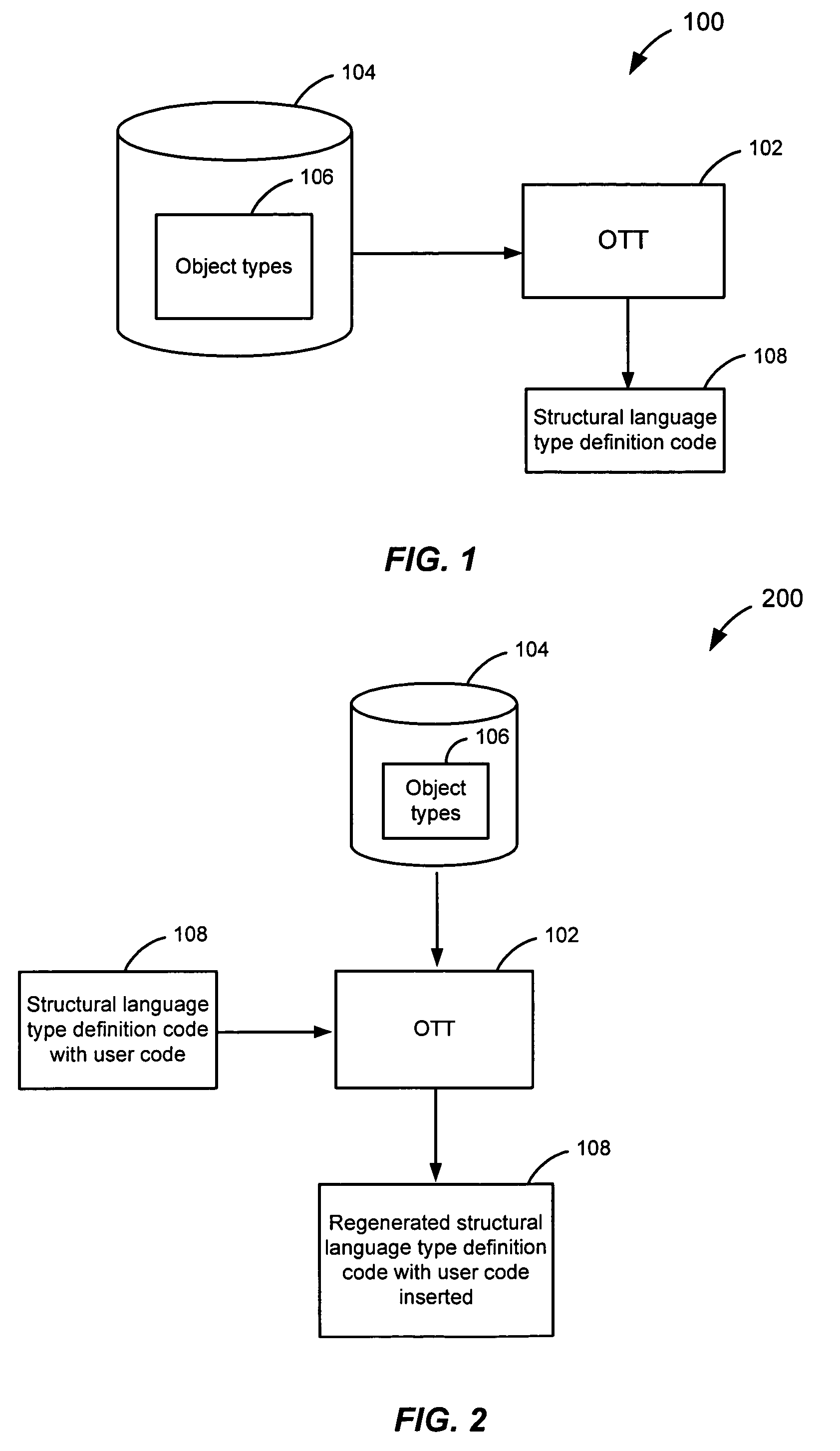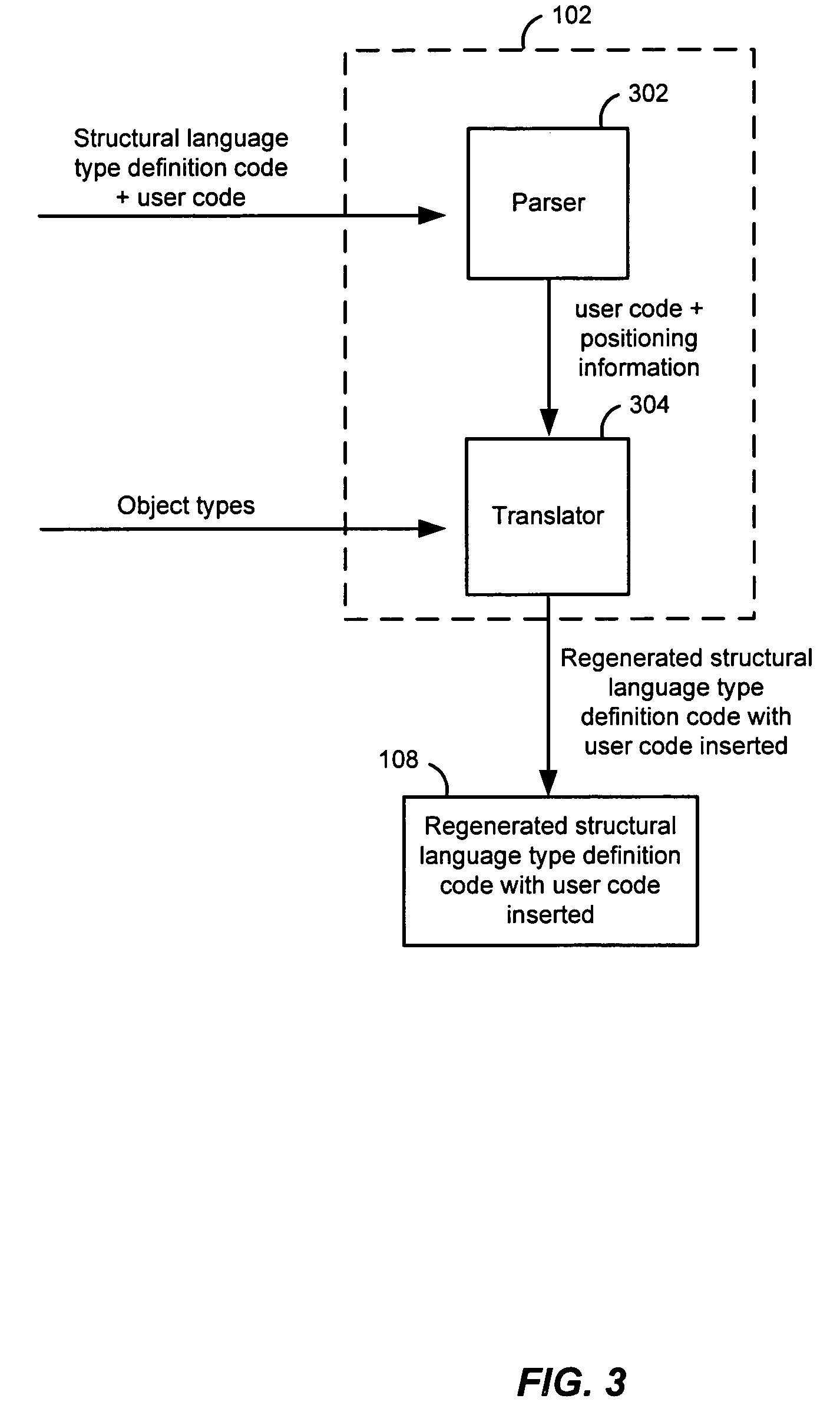Preserving user code in OTT-generated classes
a user code and class technology, applied in the field of databases, can solve the problem of losing time in adding user code that was previously added
- Summary
- Abstract
- Description
- Claims
- Application Information
AI Technical Summary
Benefits of technology
Problems solved by technology
Method used
Image
Examples
Embodiment Construction
[0018]FIG. 1 depicts a system 100 for generating structural language type definition code according to one embodiment of the present invention. System 100 includes an object type translator (OTT) 102 and a database 104. OTT 102 maps object types 106 to structural language type definition code and stores the code in files 108.
[0019]Object types 106 may be created and stored in database 104. Object types 106 may be used in the creation of database tables. Object types 106 are well known in the art. It will also be recognized that database items other than object types may be translated. Object types 106 may contain attributes of primitive data types or other object types. An object type may be inherited from another object type.
[0020]Once the tables are populated, the objects stored in the table may be accessed. In order to access the data found in object types 106, the object data in object types 106 should be represented in a host language format. This may be accomplished by represe...
PUM
 Login to View More
Login to View More Abstract
Description
Claims
Application Information
 Login to View More
Login to View More - R&D
- Intellectual Property
- Life Sciences
- Materials
- Tech Scout
- Unparalleled Data Quality
- Higher Quality Content
- 60% Fewer Hallucinations
Browse by: Latest US Patents, China's latest patents, Technical Efficacy Thesaurus, Application Domain, Technology Topic, Popular Technical Reports.
© 2025 PatSnap. All rights reserved.Legal|Privacy policy|Modern Slavery Act Transparency Statement|Sitemap|About US| Contact US: help@patsnap.com



